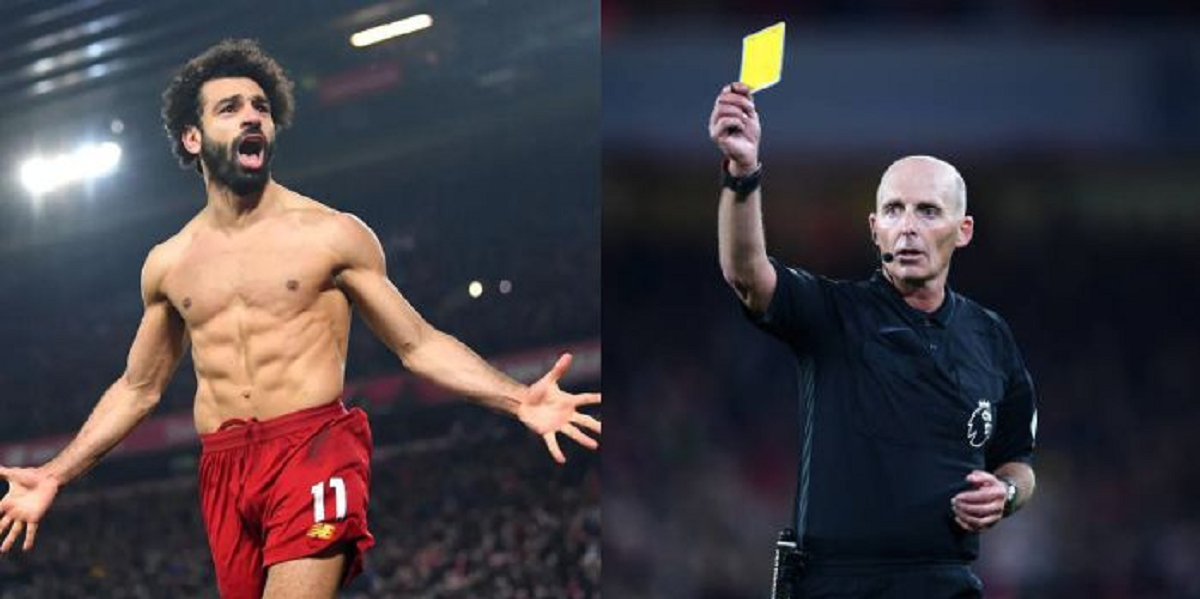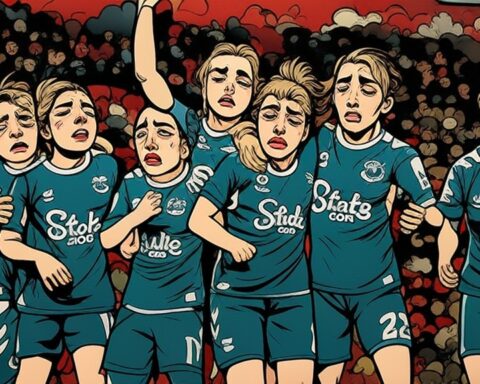(This article was originally written by Simon Winter in February 2018)
I was sitting in the back pew at a funeral recently and my mind started to wander. I wondered if the average age of people who regularly went to church was now older than the average age of the churches themselves.
In between trying to amuse myself by making imaginary faces out of knots in the varnished wood of my surroundings, I spotted a man wearing an old Man Utd jersey with Ronaldo’s name printed on the back sitting a few rows in front of me.
Fine attire to choose when paying your respects I know, and I wondered if the priest would take offence if he saw a Red Devil amongst his congregation.
Would he ask him to remove the jersey? Then I imagined an amateur Sunday League referee emerging from the massed ranks of mourners, brandishing a yellow card from within his suit pocket to book the United fan for taking off his kit.
In the midst of my day dreaming I realised I didn’t actually know the official reason as to why players are cautioned for taking their jersey off while celebrating.
I had heard the anecdotal half-truths about indecent exposure and even the rumour that it had to do with shirt sponsorship.
When a player scores a goal he has the world’s full attention, meaning the company with their logo emblazoned across his shirt does too. An association with success if you will. When the player removes his shirt, he removes the logo with it.
Peak advertising time is lost. In a money-driven game, it made sense. However, that would also mean that sponsors were able to influence football’s law makers and used their pull to tweak rules for their own benefit. Far-fetched?
I’ve also read that the ban on shirt removal was to put a stop to footballers using their undershirts as a canvas for a political statement (Robbie Fowler circa 1997 with his message of support for the Liverpool Dockers).
Or that the sight of bare-chested men was offensive to some of those from a particular religious denomination.
I did toy with the idea that the rule change may have been driven by a covert group of the less than physically sculpted footballers of the world, who were sensitive about their bodies.
To reduce ab-shame, they secretly petitioned FIFA to enforce a “no showing off rule”. Ok, maybe not.
Here is the official reason from the horse’s mouth. On FIFA’s official website, it states:
“The IFAB, the body responsible for the Laws of the Game, decided to add a detail to Law 12 relating to ‘Fouls and Misconduct’, stating: “A player who removes his jersey after scoring a goal will be cautioned for unsporting behaviour.” (http://www.fifa.com/development/news/y=2004/m=6/news=clarification-law-yellow-card-for-removal-jersey-92958.html)
They explain their amendment in a little more detail further down the page:
“Under the section “Additional Instructions for Referees and Assistant Referees”, the Laws clearly state: “Removing one’s shirt after scoring is unnecessary and players should avoid such excessive displays of joy.”
So there you have it, FIFA aren’t keen on excessive displays of joy. That’s the crux of it.
“You’re far too happy you bastard, have a yellow card”.
Not content with having a financial and political stranglehold over the global game, the control of joy was their first foray into the emotional domain. Feel your feelings with freedom while you can!
The decision to apply the rule change actually took place on the 28th of February 2004 when the International Football Association Board (IFAB) convened for their 118th Annual Meeting in London.
That day a conference room filled to bursting with a multinational mix of dignitaries and officials sat down in an attempt to find a precise definition of the word “joy” and how much “joy” is considered too much “joy”.
But only joy mind – other emotions would have to wait their turn. Deciding upon just the right amount of sadness or angst allowed in the game was an important discussion for a later date.
Arguments and counter-arguments were flung back and forth about what were acceptable levels of joy on a football pitch.
“Can you punch the air triumphantly with one fist or two?”
“Hmmm, better make it one fist and reduce the triumphantness to 65%”.
“Agreed. Next”.
“Where do you stand on knee slides?”
“Well, the grass burn should help reduce the joy there to acceptable levels. Let’s leave that one alone FOR NOW.”
“Agreed. FOR NOW”.
“What about physical contact with supporters after scoring a goal? Yay or nay?”
“Oh one hundred times nay. The potential for excessive joy is magnified by physical human contact. Think man!”
And so on….
Satisfied with new conclusive parameters for joy established, they left London with matted toupees, and suits reeking of sherry and cigar smoke.
But having read the official reasons as to why players are booked for taking off their shirts, something didn’t sit well with me.
It just didn’t make sense. If it really is happiness that they are trying to curtail, why aren’t players punished for being overly stimulated when lifting a trophy? You could cut the joy with a knife when that happens.
What about last minute winners when an entire team, shirts and all, lather each other in buckets of sweaty joy?
An eleven man joy-rgy. Does that not make the IFAB and FIFA administrators bite through their pencils with disgust?
Behind the authoritative black and white party line, there must surely be something more insidious lurking. This is FIFA after all.
I decided to email current IFAB members Ray Ellingham and William Campbell to try to get a sense of where they drew the line between acceptable and “excessive” amounts of joy.
In truth, I didn’t expect a reply or any attempt by them to try to explain a term so ambiguous it just about covers every possible theorised reason for the rule to exist.
But a few days after I sent the email, a reply came through from the International Football Association Board, which was written by David Elleray…..yes him.
David Elleray, the former top level referee who awarded two penalties to Man Utd in the 1994 FA Cup Final, the man who sent Roy Keane off four times in his career and who officiated the famous Man Utd vs Arsenal FA Cup Semi Final replay, when Ryan Giggs scored “that” goal.
Here is what Mr. Elleray had to say:
“Dear Simon
Ray has asked me to answer your question.
The Additional Instructions section no longer exists in the Laws of the Game having been removed in 2016.
My understanding of the history of the shirt removal issue relates to exposing the bare torso being offensive in certain countries/cultures/religions. For sure it has nothing to do with advertising or commercialism.
The general opinion was (and largely remains) that goal celebrations can be joyful enough without removing equipment/clothing or wearing additional items (eg face masks etc..)
I hope this helps.
Best wishes
David
David Elleray
Technical Director of The IFAB”
So there you have it, it looks as though the parameters that were set for joy in 2004 were deemed unsuitable and were later removed, though really the explanation threw up more questions than answers.
If the IFAB were indeed concerned about offending certain countries, cultures and religions, then why are adverts for gambling so prevalent in football?
Why aren’t players punished for removing and swapping their shirts at the final whistle, or when they strut bare chested off the pitch with said shirts in hand?
In the final line of the reply, Elleray hints that although standards and benchmarks for joy may no longer be officially printed in the “Additional Instructions” annals, the cut-off point for joy during goal celebrations is still known among the IFAB fraternity, presumably passed on by word of mouth from member to member.
It sees the reasons as to why players are booked when they remove their shirts remain as cryptic and vague as ever and even though David Elleray was unequivocal when dismissing the rumoured external commercial influences behind the rule, you’d have to wonder if there is something more to it.













Follow Me